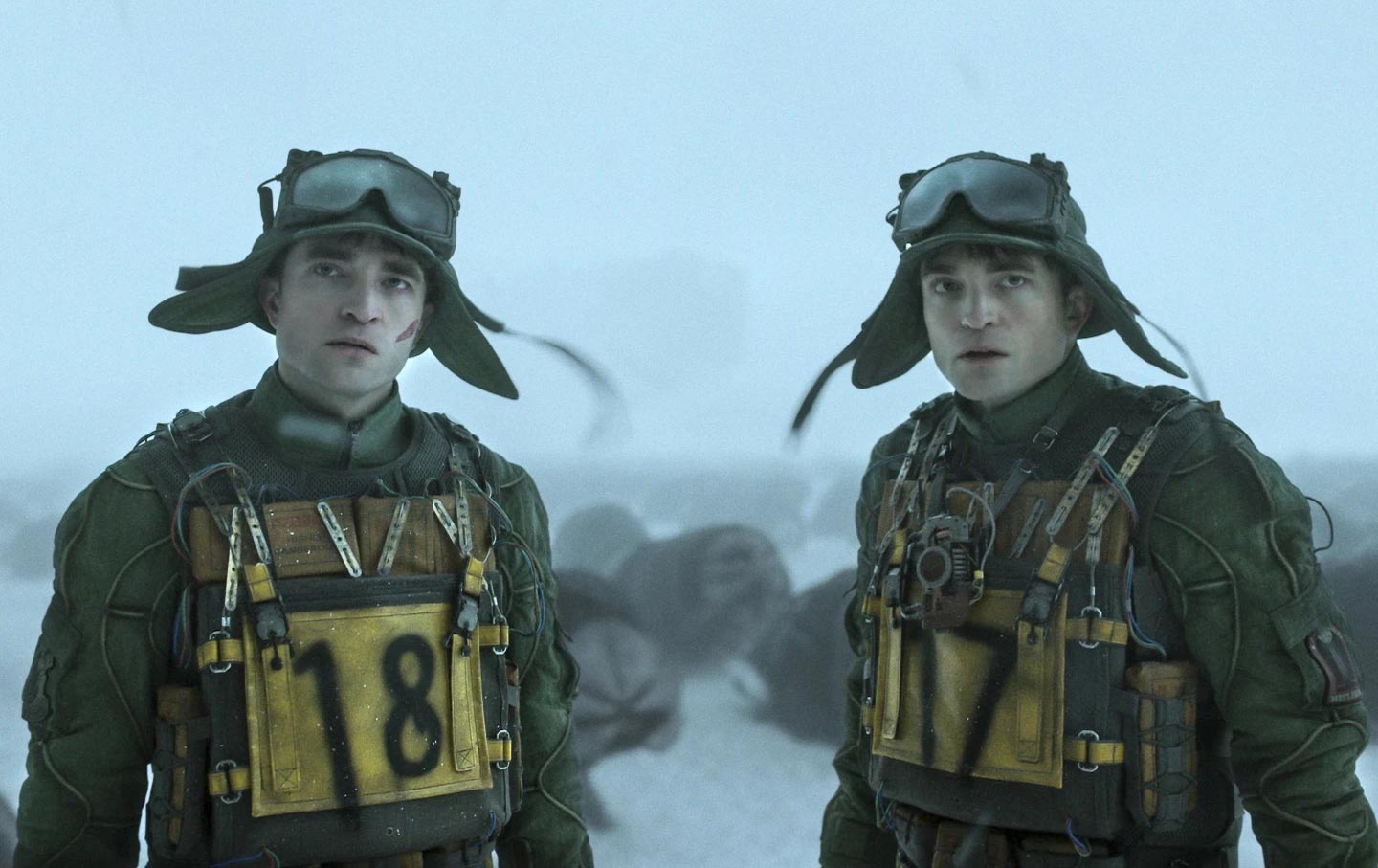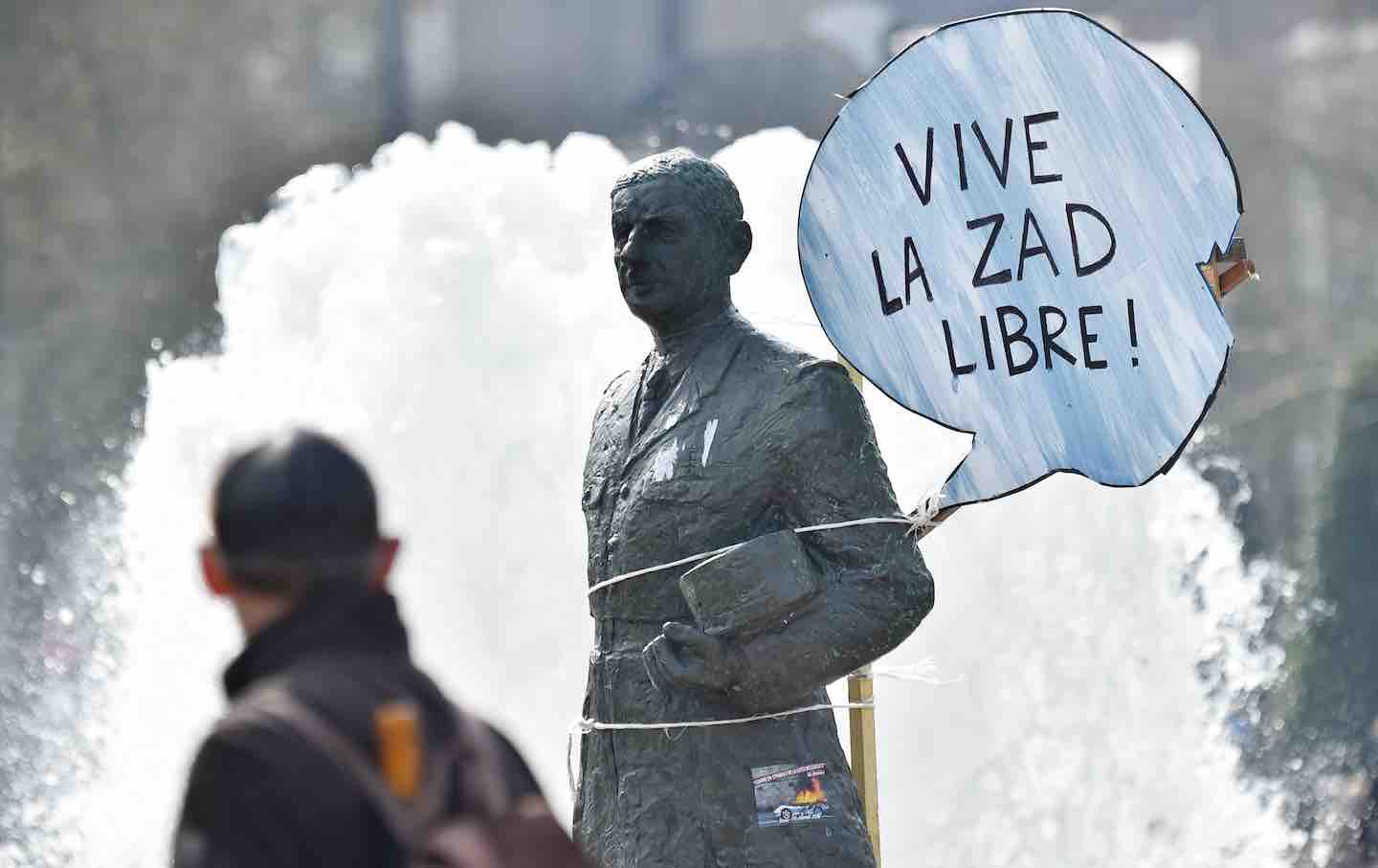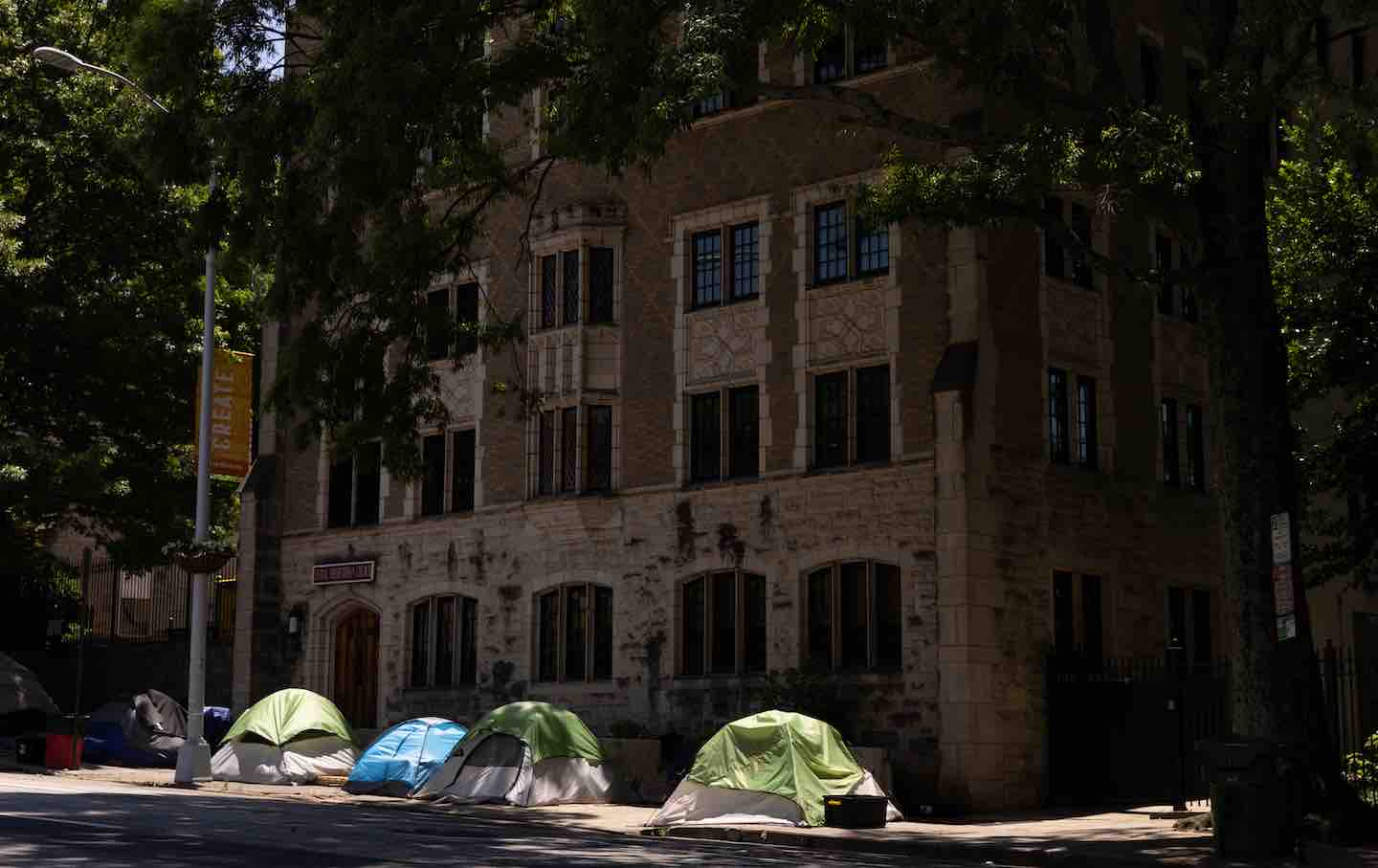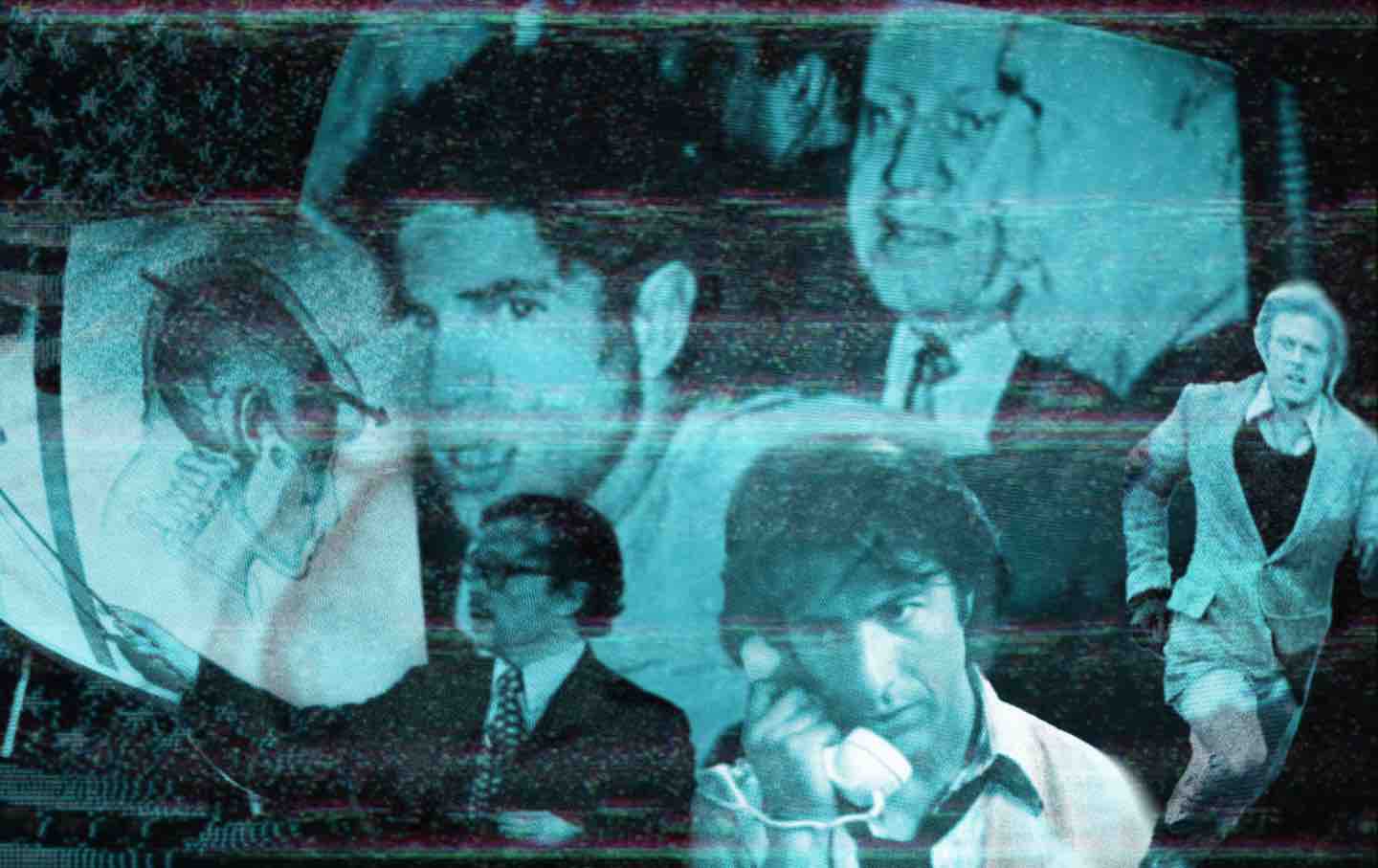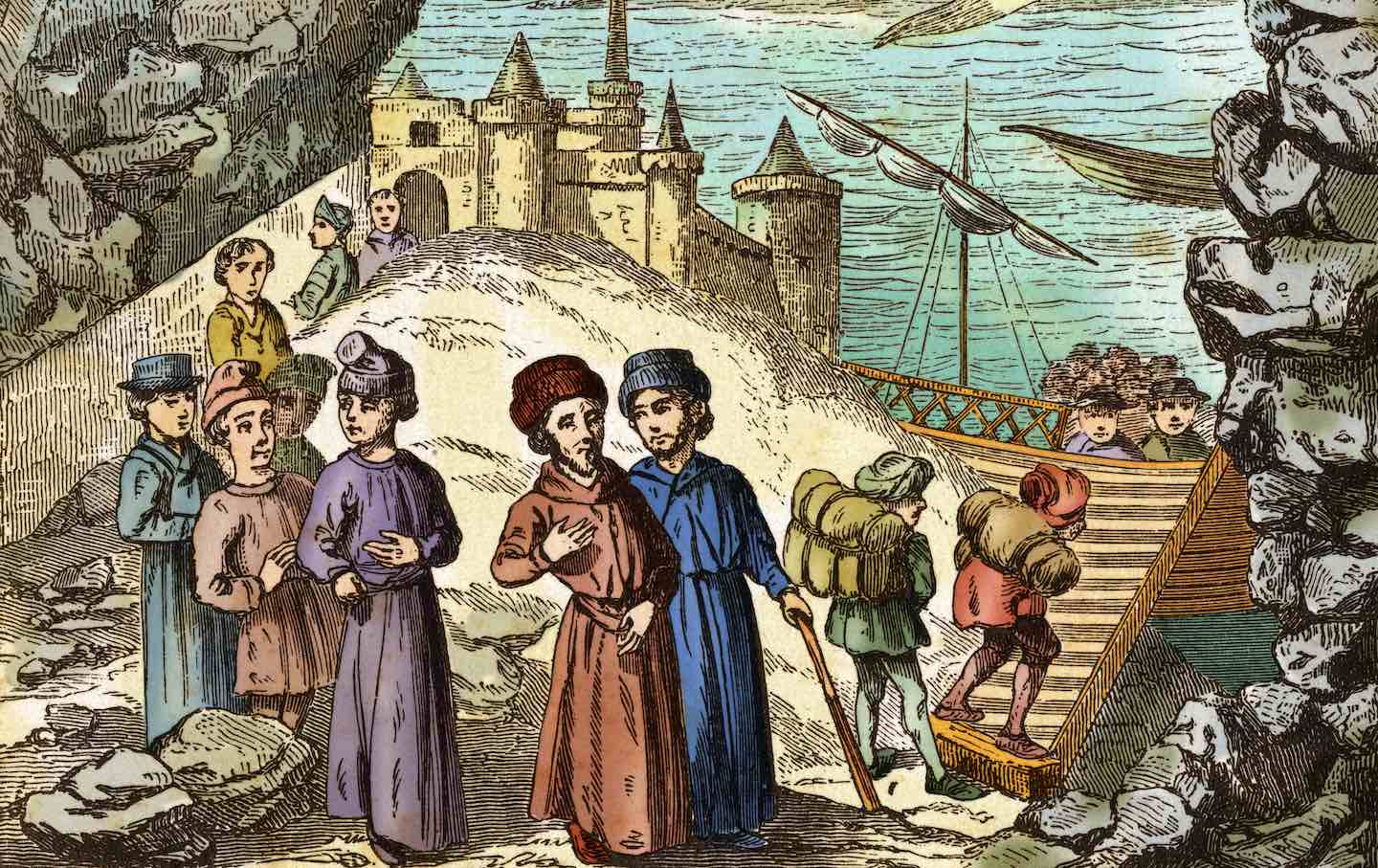
An illustration of the 1492 expulsion of the Jewish communities from the Spanish kingdoms.
(Photo by Fototeca Gilardi / Getty Images).In 1972, Mahmood Mamdani was among some 80,000 Ugandans of Indian origin who were expelled and made refugees by Idi Amin, who had taken power in a military coup the previous year. Mamdani had spent much of the prior decade in the United States, where he studied and participated in civil rights campaigns. He returned to Uganda, his childhood home, in early 1972 “as a convinced pan-African nationalist,” he wrote, “but was thrown out later in the year as an Asian.”
Mamdani, who is now a professor of anthropology at Columbia University, went on to write more than a dozen books, many of them tackling questions about political violence, colonization and decolonization, and majority-minority relations in postcolonial states. His most recent book, Neither Settler Nor Native: The Making and Unmaking of Permanent Minorities, published in 2020, argued that the colonial state and the nation-state were not separately constituted but came into being simultaneously at the end of the 15th century via two large-scale campaigns of ethnic cleansing and settlement: the genocide of Native Americans by Europeans, and the Castilian monarchy’s expulsion of Muslims and Jews from Iberia. These acts provided the blueprint for future colonial conquests elsewhere in the world, Mamdani argued, as well as acts of extreme political violence undertaken to create ethnically homogeneous states, among them the Holocaust, interethnic war in Sudan, and the founding of the state of Israel.
I spoke to Mamdani as Israel was intensifying its ground and air assault on Gaza. At the time of our conversation, which focused largely on the Israel-Palestine conflict and the dynamics of settler violence, Western nations continued to affirm their support for the Netanyahu administration despite its officials’ directing genocidal rhetoric toward the Palestinians, and despite mounting evidence of war crimes and crimes against humanity being committed by Israeli soldiers in Gaza. Our conversation has been edited for length and clarity.
—Francis Wade
Francis Wade: You’ve long argued for people to recognize the inherent violence of the nation-state, not just in its constituting phase—colonization and settlement—but afterward, as it seeks to maintain a particular version of itself. This second type of violence can be especially ferocious when one community comes to believe that it is the state. So let’s begin with the Israel-Palestine conflict: How does it, and the extremes of the current violence, illustrate this?
Mahmood Mamdani: Things reach a boiling point when one community comes to believe that it has the exclusive right to a state of its own, wherein coexistence is not possible with another community—or, if it is possible, it is not on the basis of a shared sovereignty, but on the basis of political subordination, theorized by John Locke in the language of “tolerance.” There’s a huge difference between sovereignty and tolerance. In the Israeli case, once the country shifted its self-definition to that of an exclusively Jewish state, it set aside the presumption of tolerance and moved on to a terrain where ethnic cleansing became thinkable.
FW: Have you been surprised by the ferocity of Israel’s attack on Gaza, and the support within Israel for it?
MM: I’m not surprised by the violence, because violence between Israel and Palestine has been going on for the last 75 years—it’s just that it’s been mostly one-sided. Every two years since the elections which brought Hamas to power [in 2006], Israel has been “mowing the lawn” with the quiescence of Western powers. So the current support for Netanyahu—or the current support for revenge—is not that surprising, although I see mixed signals here. There is utter disbelief that the Israeli state, whose primary—or only—justification has been to protect the Jewish people, couldn’t foresee or repel Hamas’s attack on October 7. This seems the moment of the shattering of an illusion. At the same time, violence is never enough to guarantee security. Can one coexist with another on the basis of violence? In the absence of a way to coexist, the logical conclusion would be to exterminate the other.
FW: You’re speaking to me from Columbia University, where there have been protests by pro-Israel and pro-Palestine groups, often over the language used to describe the actions of Hamas or the Israeli state. Where does this tension sit within the broader US debate over how to navigate the Israel-Palestine question?
MM: In American political culture, you can criticize the US all you want, but you can’t really criticize Israel. The difference is striking. That is now being breached. More and more young people are critiquing Israel in secular terms—in terms which would apply to any nation-state. These young people are not only late-coming critics of Israel; they are leading public opinion, including among Jews. The response to the protest movement is an accusation that this critique is not just a critique of Israel, that it’s anti-Semitism—not just anti-Zionism, but anti-Semitism. To conflate the critique of a state with the critique of a people poses a challenge to a democratic culture. The more states clothe their actions as those of a religious or cultural or racial entity, [the closer we come to] the end of democracy. We no longer have the possibility of a secular critique of a state.
FW: I want to get into one of the central arguments of your last book, Neither Settler Nor Native. In it, you locate the founding of the modern nation-state not with the Treaty of Westphalia in 1648, which emerged from the view that the sovereign-nation system is the best mitigator of conflict, but further back, with the forced conversion to Christianity, or otherwise the ethnic cleansing, of Jews and Muslims from Iberia. What impact did you intend that argument to have?
MM: Well, I had several motives. One was to challenge the thesis that nationalism and colonialism are two separate things—that nationalism is the good side, colonialism the bad side; that nationalism came first, colonialism later, or vice versa. I wanted to show that they were twins joined at the hip. And I also wanted to show that from the outset, the nation-state project could not be achieved without ethnic cleansing and extreme violence. This could be seen in the expulsion of Jews and Muslims [from the Iberian Peninsula], and that soon led to a conflict between states, because each state had an official majority—the nation it claimed to represent—and its minority, or minorities. So this would have begun as an internal ethnic issue, and it turned into an interstate issue in the Thirty Years’ War [from 1618 to 1648], following on the heels of several religiously mobilized conflicts in Europe.
My second objective was to show that the solution to it, theorized by John Locke in his “A Letter Concerning Toleration,” is a nonsolution. It’s a nonsolution because it assumes that every minority has a state somewhere else. Well, lo and behold, not everybody did. In Europe, the most outstanding example was the Jewish minority—it had no state anywhere else. And we’re still working out the consequences of that.
FW: You wrote early on in the book that “a single-minded focus on identifying perpetrators leaves undisturbed the logic of institutions that make nation-building violence thinkable and possible.” Can you elaborate on this?
MM: The human rights paradigm focuses on the perpetrators of violence. It wants to identify them individually so that we can hold them individually accountable. It does not look for the beneficiaries of that violence. Beneficiaries are not necessarily perpetrators. To address beneficiaries, you need to identify the issues around which violence is mobilized. The word “beneficiary” is not even there in the vocabulary of human rights movements—they have only perpetrators and victims. You have to ask yourself: Will the problem go away if you identified the perpetrators and held them accountable? No—from my point of view, not at all. You can fill an unlimited number of jails [with] perpetrators, but it will not bring a solution to the problem unless you acknowledge that the problem is more political than criminal, and that when it comes to political conflicts and political violence, adversaries mobilize around issues. A political problem needs a political solution.
That was the South African lesson. The end of apartheid was not a court trial which identified individual perpetrators and punished or amnestied them. The solution was political: It reformed the state, from an apartheid to a democratic state.
FW: The cleansing of Jews, as well as Muslims, in Iberia in the 15th century was done to create an homogenous Iberian state. It was political, and in a sense, it was among the first acts in the making of the modern political world. Five centuries and innumerable anti-Semitic pogroms later, the Holocaust compelled the need to establish a secure homeland for Jews. Yet you critique the assumption that this homeland needed to be a Jewish ethno-state.
MM: Long before Zionism, many Jews had been convinced that at some point they wanted to go to the homeland—Israel. But from the beginning of the Zionist movement, there were Jews who were opposed to the Zionist idea. To go to the homeland did not mean that you had to have exclusive access to it or exclusive control over it, which is what the state project meant. It could be a homeland to Jews, and it could be a homeland to Palestinians. And lots of Jewish scholars, from Einstein to Freud, reached that conclusion.
The Jewish immigrants to Israel [in the late 19th century] did not have a political project. The immigrant project was limited to finding space in the existing society, to live under the existing political umbrella, whatever it was. Conversely, the settler was defined by a political project, at the heart of which was to set up a settler state. It was this political project which sparked political violence, because it translated into removing Palestinians from that land. If you created a trade union, you couldn’t have a Palestinian in it. If you created a cooperative society, you couldn’t have a Palestinian in it. It was, from the very beginning, an exclusivist project which did not permit the possibility of thinking in terms of mutual and peaceful coexistence.
I believe that it’s crucial to make a distinction between a Jewish homeland and the Jewish state. The idea that the land had to become exclusive Jewish property was a Zionist idea; nobody else articulated that. And it needed the outside support of imperial powers, which had their own interests, and it still needs that support. After [the current war], when people have time to breathe and think of tomorrow, they will have to ask themselves: Where are we safer as large numbers of Jews—in New York or in Israel? With or without an exclusively Jewish state?
FW: How have your own experiences shaped your interest in violence and state-building, migration and citizenship?
MM: My family came to the coast of Africa in the late 19th century on my mother’s side, and in the early 20th century on my father’s side. We moved from Tanganyika [now Tanzania] to Uganda in the 1950s. The Indian question in East Africa is part of the settler-native paradigm through which the British made sense of peoples in the region. There was no room for immigrants in the settler-native binary. The “native” was indigenous. For many nationalists who never managed to see through the colonial paradigm, true independence required all immigrants to leave so the land could truly belong to those indigenous to it.
I am a child of immigrants to Africa. Contrast the immigrant with the settler: The Indian immigrant, the Indian dukawallah, the Indian small shop owner never carried a gun. Impossible. But I can’t imagine a white settler who did not carry a gun. It’s just that different. The immigrant could only feel secure by developing positive give-and-take relations with his neighbors; the settler could only feel secure by owning arms which threatened the life of his neighbors. The two are completely opposite projects.
FW: You’ve argued that a single binational state of Israelis and Palestinians, Jews and Arabs—a notion pushed by early-20th-century Jewish thinkers like Judah Magnes, and into the 1990s by the likes of Edward Said, but now seen as unrealistic—was only ever going to go so far unless preceded or accompanied by the “de-Zionization” of Israel.
MM: Judah Magnes was not alone. There were many people—Hannah Arendt and others—who, when they thought of the future through the prism of a Jewish state, could see nothing but disaster. They invested their energies and their imagination into thinking of alternatives.
De-Zionization was a project that Jewish students in the Matzpen [a revolutionary socialist organization founded in 1962] came up with in the 1960s. By “de-Zionization,” I mean a clear distinction between state and society. If we define the state along monocultural and mono-religious lines, it will truly make the tolerance of diversity in society very difficult. I think you can see this from the experience of the Arab Jews [in Israel], the Mizrahim. The Mizrahim were Arab in their culture and Jews only in their religion. And when they arrived [from North Africa and elsewhere in the Middle East], the Ashkenazim in the Israeli power elite were horrified. They saw these people culturally as Arabs, and many—including Hannah Arendt—thought them civilizationally backward. The Ashkenazi project was to de-Arabize them. In order to preserve the Zionist state, they wanted to de-Arabize society and the Mizrahim and force them to give up the Arabic language, which was their language, the cultural medium in which they wrote. They wanted to make sure that these people were not Arabs. Well, they [the Mizrahim] paid back the Ashkenazim, because they became the backbone, the flesh and muscle of right-wing religious parties. Today, they are the infantry in this army; they are the bulk of the settlers.
From the time of the French Revolution, the nation-state aspiration has been to take control of all institutions that socialize people, such as schools, which became the place where you created the citizen and the army. That’s what the Mizrahim had to go through. At the same time, the Mizrahi traits considered “backward” could be turned to the advantage of the Zionist project. Since they spoke Arabic, they became intelligence agents in the occupied territories. At every point of contact with Palestinians, whether military or nonmilitary, the Mizrahim were in the front line.
FW: Let’s talk again about “homelands”—an idea that generates much emotion, and much violence. You’re a Ugandan of Indian descent and were once a “convinced pan-African nationalist.” You’ve also lived in the US for much of the past four decades. You have a complicated history. What does “homeland” mean to you?
MM: The thing about a homeland is that you don’t have to have just one. You can have several. You don’t have to cast one aside for another. People invest great emotion in the idea of a homeland, but that is quite different from convincing ourselves that the homeland has to be exclusive, and thus a nation-state from which others must be excluded. We do not want to be homeless, but we also do not want a world in which we’re going to be caged. In the period before modernity, the norm was to live in the midst of diversity. To create separate ethnic homelands was a modern project, including in the colonial world. I think we have to retrieve from the premodern past that bit of wisdom—how to live in diversity, to coexist—before building on it.



